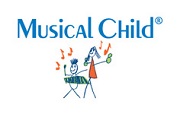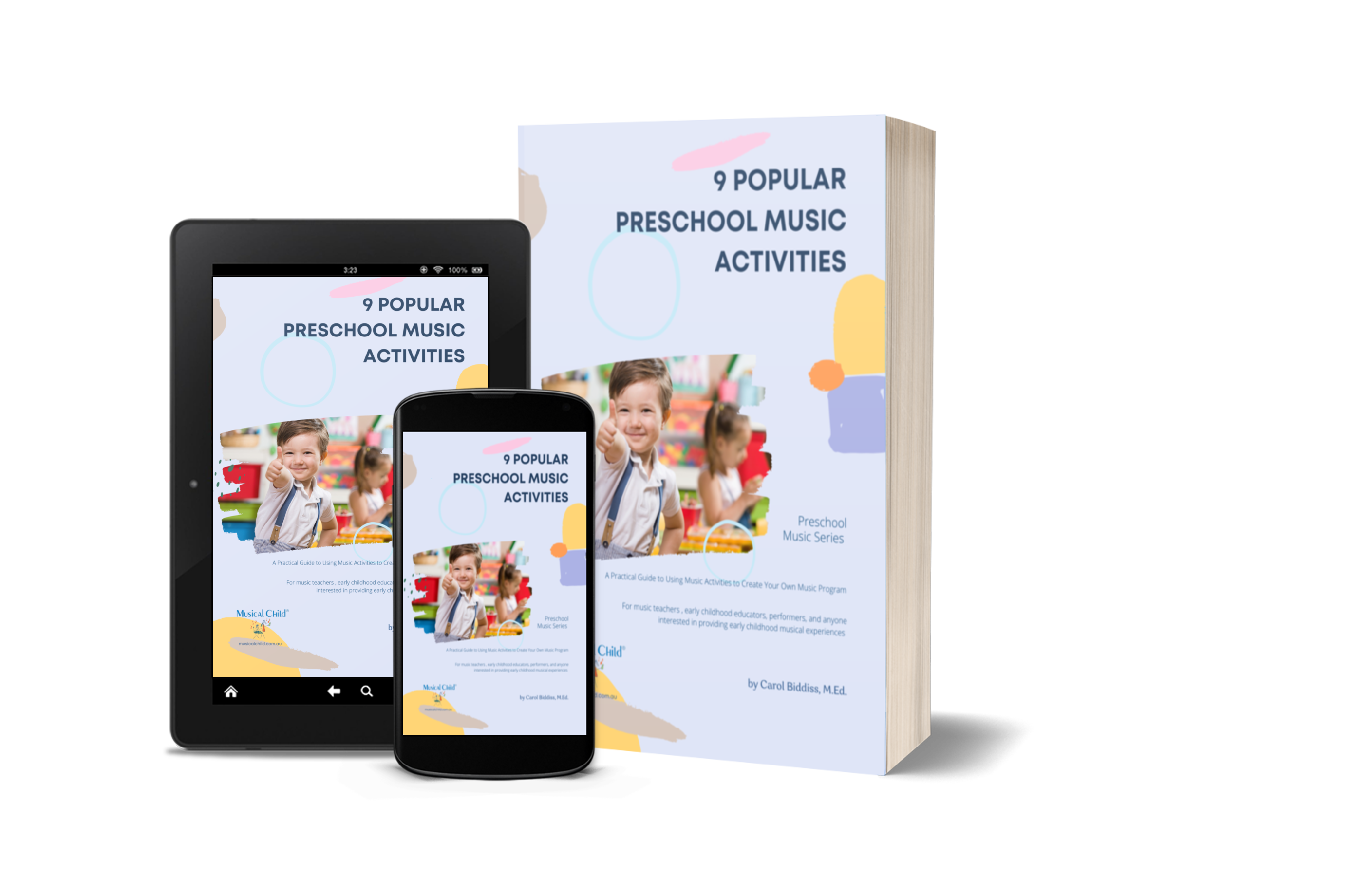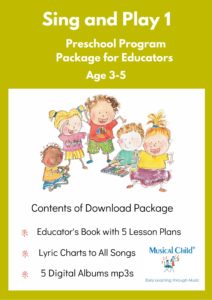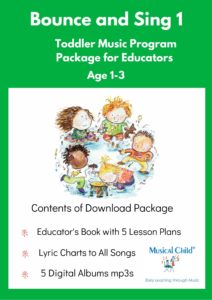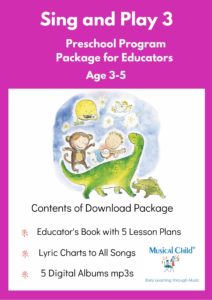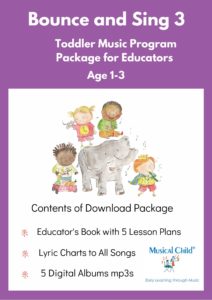Early Childhood Music Programs: Five Tips to Help You Begin Writing
Early childhood music programs: Support your work
Early childhood music programs come in all shapes and sizes, from the informal—back of an envelope to the elaborate—book format. Unless you are following a national or state curriculum with standards or the policies of your employer, it may never cross your mind to prepare a written program. Here is just one reason that I like to prepare my programs of learning in early childhood music and movement:
They let me know what I’m doing on a given day, what songs, gestures and movements I need to rehearse, what lyrics I know or need written out to support my live singing, what props, instruments, equipment, lyric charts and books I need to take with me or prepare in my venue the day before. I like to know the general theme, so I can get in the mood and allow inspiration to flow for spontaneous additions to what I have programmed, such as grabbing a last-minute prop as I leave home, or making up a new verse as I travel to work.
Do you like working from a written early childhood music program? Here might be a good place to reflect on why or what you might gain if you planned a little more in advance.
Skim through these five initial tips for designing a program that supports your work and find which tips spark your interest. There are more tips in the posts to follow.
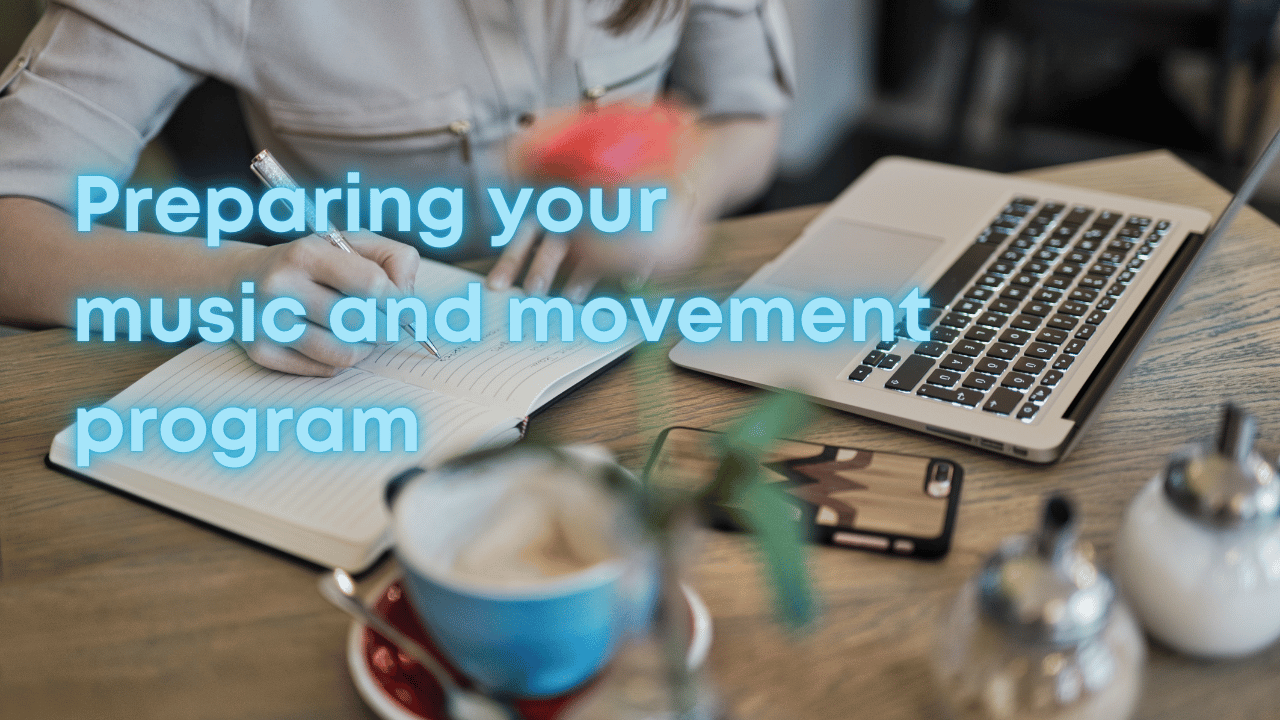
Questions to ask before you design your program
Here’s a list of the questions that influence how early childhood music programs are designed and written.
- what is the focus?
- who is involved?
- why are you doing this?
- when will the program sessions run?
- where will they be held?
In the next post, I’ll cover the question — what content will you program?
TIP 1. What’s the focus for your music and movement programs?
Here are a few of the types of early childhood music programs I’ve developed to support my practice and my team’s. I’ve also included some I’ve seen written by other performing arts specialists. Each program has a different focus.
- Community sessions with parents or carers focused on specific age groups
- Community sessions with parents and carers focused on mixed-age groups
- Early childhood service with educators focused on a specific age group
- A variety of settings with parents or educators focused on children with particular needs
- Early childhood centres with teachers focused on intentionally following children’s particular interests
- Community/cultural/religious/common interest groups (based on a specific district/language/culture/religion/interest) focused on shared cultural practices with children and their families.
Write the focus for your main music program.
TIP 2. Who are the children and adults with access to your sessions?
Who can come to your sessions, and what are their needs? Will you be paid for your work? Are you limiting the age range or covering all of early childhood (0-8 years-old)? Is there an organisation involved, or are you operating independently? Here are some provocations to help clarify your thinking about early childhood music programs:
- Attendance requirements (paid or not)
- Age of the child/children
- Needs of the child/children
- Interests of the children
- Role and needs of the presenter (you)
- Roles of the other adult(s)— your assistant, parents, carers, educators, teachers, performers
- Role of a group—community, cultural, religious, or shared interest.
Write who you want to see in your main music program.
TIP 3. Why: What are the reasons for providing the programs?
The ‘why’ of programming relates to the overarching vision statement, but here we’ll focus on the specific reason for the particular program you have in mind. Although you, or your organisation, may have one overall vision, you might be running several early childhood music programs, each with a different ‘why’.
Here are a few statements to broaden your thinking. Differing rationales result in quite different programs. (Hint: you can have more than one reason!)
- To achieve learning outcomes based on a curriculum, e.g., the Australian ‘Early Years Learning Framework’.
- To teach musical skills and knowledge, e.g., pre-piano group classes.
- To enjoy theme-based musical participation in the community, e.g., ‘Sing and Play’ by Musical Child.
- To offer interactive, joyful entertainment, e.g., Birthday parties, choices of themes and activities on a ‘menu’.
- To offer excitement and pleasure through performances for children, (e.g., shows such as Pirates Ahoy!; ‘Meg in the Magic Toyshop’.)
- To stage performances by the children to satisfy and delight their parents and friends, e.g., twice-yearly shows by an academy of performing arts.
- To provide access to music and movement experiences for children who might otherwise miss out.
- To strengthen an isolated community through shared performing arts practices.
- To share your musical skills, knowledge and dispositions with your community.
Write the reason behind your main program.
TIP 4. When: What guides the timing of the sessions for each program?
Differing from the previous question about your reasons, the ‘when question’ supports you in a very practical sense. Most early childhood music programs require schedules.
For example, you might visit an early childhood setting where you conduct one 20-minute session in the babies’ room, two half-hour sessions with different groups of toddlers, and a 30-40-minute session with the preschoolers, depending on the children’s interests that day.
On the other hand, your community music groups might meet in three separate 45-minute sessions, carefully scheduled, because you need to move in and out of a paid venue that you book on an hourly basis.
In some cases, there may not be any scheduling, e.g., when you are intentionally teaching to the interests of a child or group.
Here are a few considerations:
- Regularity: week/month/quarter/term/semester/all year/once a year.
- Term/semester-based.
- Seasonally-driven.
- Duration: ad hoc; 15 minutes, 30 minutes, 45 minutes, an hour or more.
Write when you will be delivering your sessions and how long each session is.
TIP 5. Where: What kind of place is it?
Your early childhood music programs will be significantly shaped by the various environments, particularly in terms of what they offer and adjustments needed to ensure your activities and experiences are successful and suitable. Here are some venues I’ve used or seen programs operating in:
- Early Childhood Service
- Early Learning Centre
- Kindergarten
- School
- Music School
- Music Conservatorium
- Music Studio
- Dance Studio
- Drama Theatre
- Performing Arts Academy
- Private Home
- Community Centre
- Church and Church Hall
- Cultural Club Rooms
- Barn
- Sport Club
- Gymnasium
- Museum
- Art Gallery
- Guides and Scouts Hall
- Yoga Studio
- Indoor Play Venue
- Outdoor Venue
- Cruise Ship
- Warehouse
Write where you will be holding your main program.
What’s Next?
Your early childhood music programs will remind you of what the focus is, who’s going to be there, why you are showing up, when and where you’ll be doing what you do.
In the next post, I’ll discuss ‘what will you do?’— the types of activities and experiences that form the basis of well-planned programs.
REFERENCES
Australian Education Research Organisation. (2025). Play-based learning with intentionality: Discussion Paper.https://www.edresearch.edu.au/research/discussion-papers/play-based-learning-intentionality
Discover our complete music and movement year-long curriculum for preschoolers.
Discover our complete music and movement year-long curriculum for toddlers
Discover our course in writing a music and movement year-long curriculum for babies
Get Your FREE Educator's Resource Here
Sign-up to Receive a FREE Guide on How to Teach Preschool Music Activities.
Inside this Mini-course you will be able to download a beautiful PDF and a collection of 20 MP3s. You will learn how to deliver nine popular preschool music activities that your children will LOVE!
(p.s. It's a mini-course, that means you'll be in and out in minutes with fresh resources you can use immediately with your children.)
(p.p.s. You also get a bonus lesson on what instruments to use with preschoolers. 🪇)
